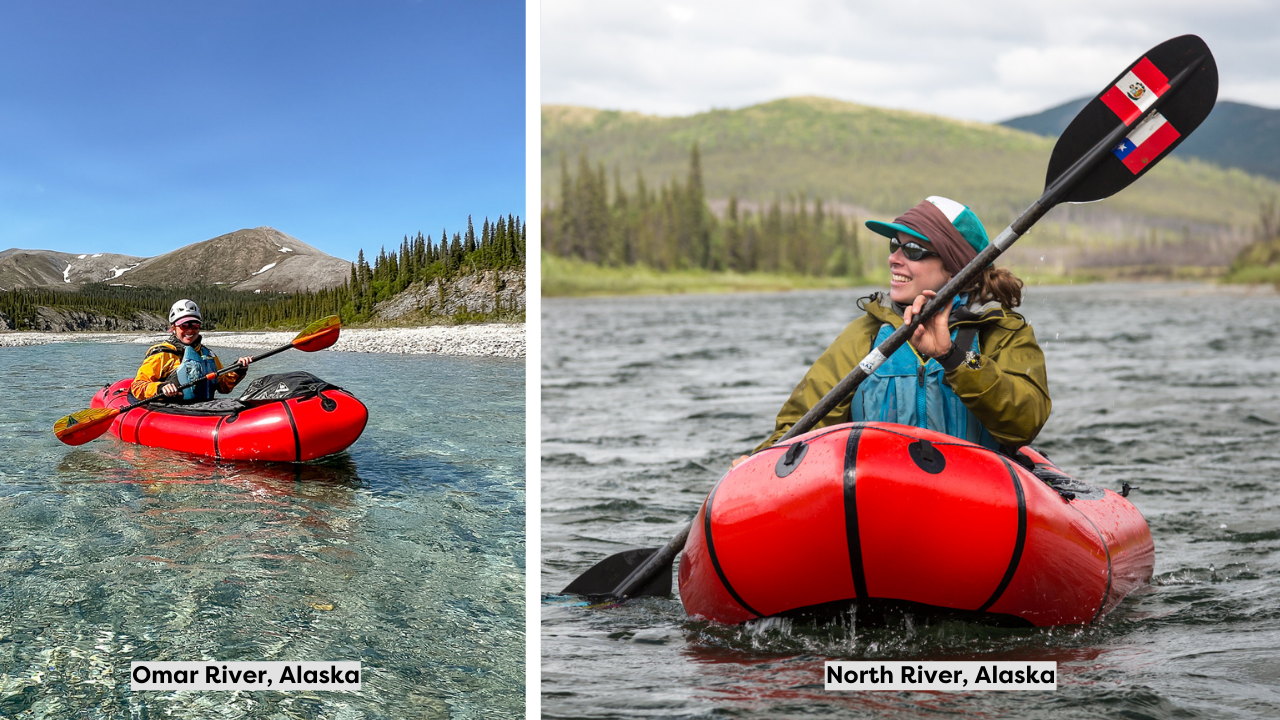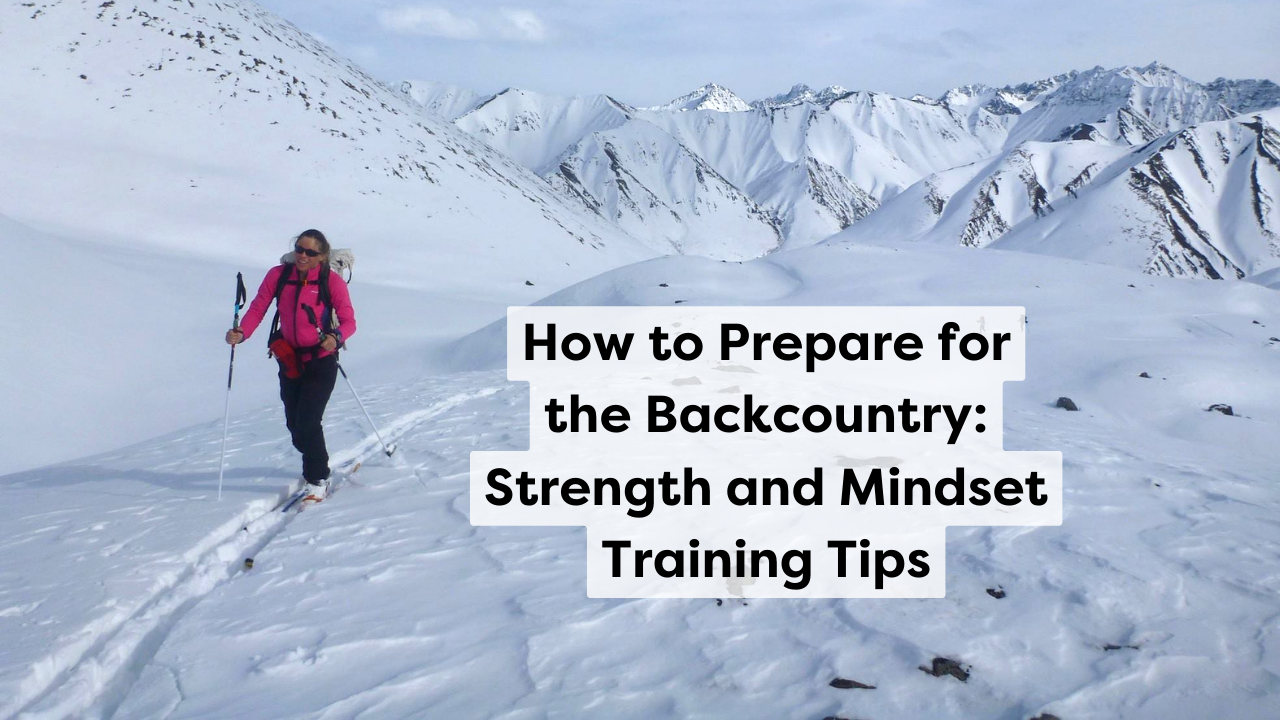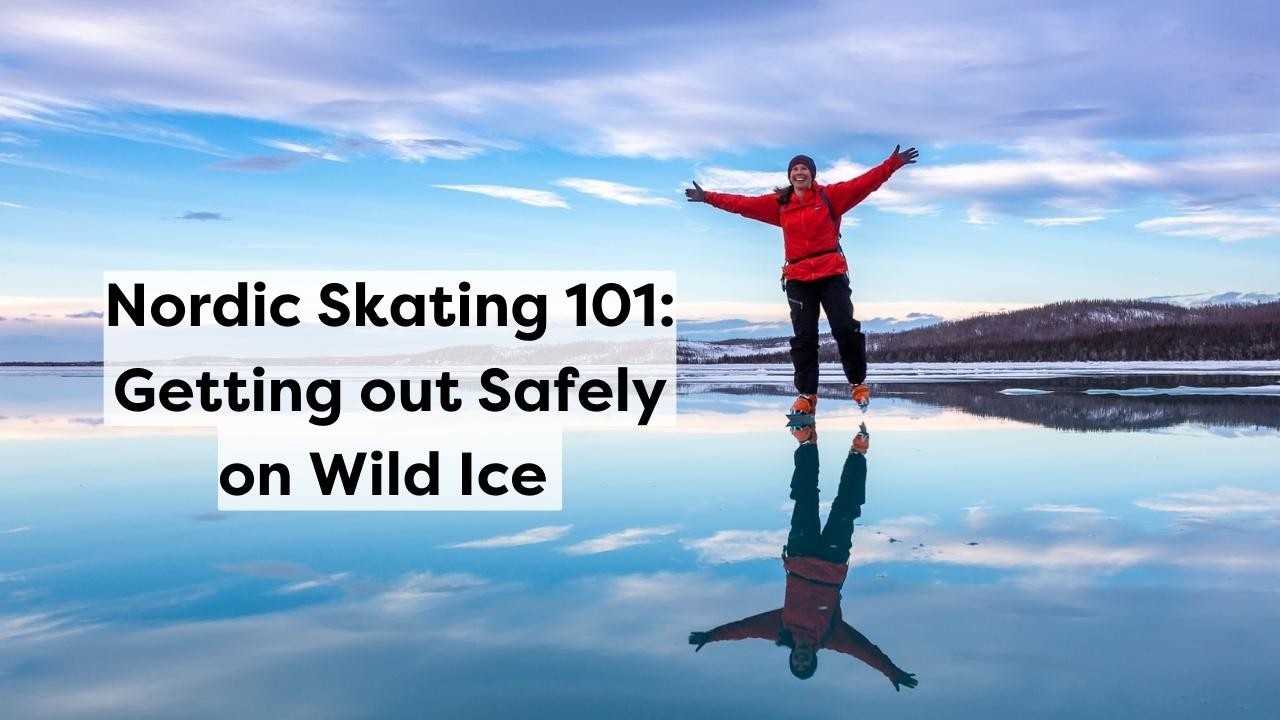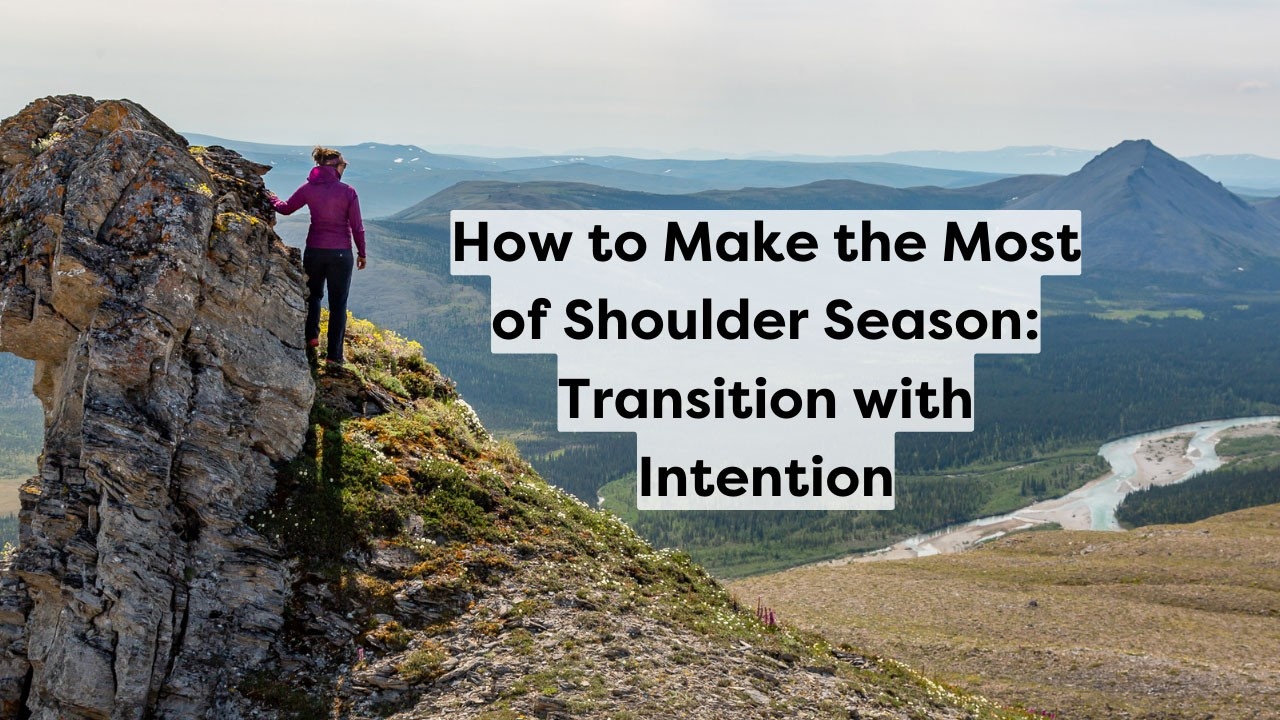Podcast: Cross-Training for Skiers and Aging Gracefully

Cross-Training for Skiing, Channeling Healthy Aggression, and Women-Centered Spaces Outdoors
I recently sat down with Jen Gurecki of Coalition Snow for a juicy chat (hah!) on the Juicy Bits podcast for an episode we called Wisdom & Wellness. We covered so much ground, from learning to ski as an adult, to aging gracefully, to cross-training for winter sports, and lots more.
Jen is a winter superfan and the CEO of Coalition Snow. Over at Coalition Snow, they sell winter sports gear and other merch, plus lead group outdoor trips. Jen and her team have created a fantastic niche in the skiing and snowboarding community, and I’m happy to have an ongoing relationship with them. Jen has even joined us for Ski Babes workouts!
One of the topics we loved most is unpacking the norm and pressure in skier culture for skiers to go as hard as possible and constantly push themselves physically. We poked at why we don’t subscribe to that mentality, and the importance of joy and mental health in redef...
Preventing Knee Injuries: Checking Your Risk for ACL Injury

Overcome ACL Risks and Boost Outdoor Resilience
As outdoor enthusiasts, injury is one of the hardest things we deal with. Being sidelined and missing out on a season of your favorite activity is heartbreaking! We would know: as a teenager, I tore both ACLs within a couple of months of each other! Those injuries were devastating at the time, and took a lot of work to come back from.

Among skiers, ACL tears are the most common knee injury. And they are especially common among women.
The good news is we have tools we can use to understand how likely we are to injure our knees. Armed with that knowledge, we can make smart decisions about how to train to reduce our risk. Of course, there's no way to guarantee remaining injury-free. Life happens! But we can stack the deck in our favor, and that’s powerful.
What follows is an assessment of your personal ACL injury risk. Knowing what your weak points are can be scary, but with that information, we’ll be able to develop a plan for what...
Packrafting Strength: 5 Moves for Better Adventures

Get Packrafting-Ready with These Functional Moves for a Strong Summer
Are you ready for an exciting season of packrafting? Whether you’re just getting into the sport or a seasoned veteran, building strength before your first trip is a great way to make the most of packrafting season. Practicing functional movements at home can build muscle memory in the pre-season, jump-starting your packrafting season for strong technique all summer long.
I’ve been packrafting Alaska rivers for years, and I’m also a fitness trainer. I’m excited to share these exercises that I know from personal experience will help you when you’re out on the water this summer.


Strength-Building Moves for Packrafting
First, a story: in the summer of 2018, my husband Luc & I were in the habit of doing a set of pushups every day. Then we left for a 10-day packrafting trip that started with 60 miles (97km) on the Yukon River. We knew that the Yukon moves at about six miles per hour (10 km/hr) and expected to be on i...
Sore Hips from Backpacking?
The Source of Your Sore Hips During Backpacking
Hip soreness during and after a long day backpacking can be a real bummer! But it’s actually very common for backpackers to get sore hips. When we’re carrying our camping gear & food weight around for mile after mile in our backpacks, it puts a ton of stress on our hips.
With a heavy pack, the weight's got to go somewhere. In the process of trying to save our shoulders, we might be passing on the problem to our hips. Our hips, more than our shoulders, are designed to carry weight. But sometimes after long days, even our hips get tired, achy, and sore.
I've been personally having problems with sore hips after long backpacking days, so I mentioned the issue to my friend & Physical Therapist Shasta Hood. He suggested thinking about it as an IT band issue. When we tighten our backpack's hip belt, we're also pressing at the area that the IT band moves through. This can effectively shorten the IT band, which causes that tight, sore sensation...
How to Prepare for the Backcountry: Strength and Mindset Training Tips

Tuning up our bodies & minds for the season
Winter is here and many of us are spending as much time as we can playing in the snow and the mountains! As we move through this winter season, let’s talk about how to tune up our bodies and minds for the season, too. Taking good care of yourself isn’t just something to practice in everyday life. We can bring self-care into the mountains too.
Taking time for cross-training both before and during the season can make your days on the mountain so much more enjoyable! Training helps us prevent injuries, keep up with our friends, and have more fun outside. But it can be hard to know how to adequately prepare for winter sports - especially for the backcountry. In this post, we’ll walk you through some simple exercises and mindset tips to practice.
We hope you use these moves and concepts to build your mind & body strength for this winter season!
Training for Strong Winter Bodies
Let’s start with some simple moves you can do in your living roo...
How to Practice Self Care: Winter Wilderness Adventures

Self Care for the Winter Season
Taking good care of your body and mind is important in both everyday life and our outdoor lifestyles. Self care is an especially important concept for winter, when sometimes our mood and energy level can drop. So what does that look like? Here are four tools for wilderness lovers to practice self care this winter.
Tool #1: Using Titration to Grow without Overwhelm
Titration is one of our most important nervous system concepts here at Mind & Mountain. It’s originally a term from chemistry, but when applied to the nervous system it means adding challenge slowly, in small, and manageable doses. Picture adding liquid one drop at a time into a beaker: that’s titration.
Like a chemical reaction overheating or bubbling over, doing too much too fast can flood our nervous systems. When our brain gets flooded, it literally changes how it functions: the rational part of our brains shut down while our fear and survival zones kick into high gear. This is great fo...
Three Exercises for Backcountry Skiers: Training for a Strong Winter

Why exercise at home for stronger ski days?
Winter is here and it’s time to hit the slopes! As we get our winter gear out, it’s important to think about how to tune up our minds & bodies for the season, too.
One of the best things you can do to stay strong and injury free this winter is to prep with a little strength training. Doing some exercises at home, even in small doses, is a really effective way of staying healthy on your skis. Nothing ruins ski season like being sidelined with an injury!
On top of that, practicing functional movements at home can build the muscle memory to help your technique come together early in the season. By building your endurance and practicing healthy movement patterns in pre-season, you can jump start your season and ski strong all winter long.
Three strength moves for backcountry skiers
We’re going to take you through three moves we love for building strength for ski season. Each of these movements imitates an action that we use in the backcountr...
Podcast: What to Wear in Cold Weather

What I’ve Learned about Layering for Cold Weather
I recently had a chat with Amy Bushatz of Humans Outside where we unpacked our best tips for how to dress for outdoor activities in cold weather. As Amy and I talked about, winter layering can be really intimidating! We both feel passionately about helping to lessen this barrier and helping folks feel more confident outside in winter. That’s why I’m so excited to share this conversation with you.
Amy has spent at least 20 minutes outside for more than 5 years. She believes fully in the transformative power of spending time outside, even in small, simple ways. She encourages others to build the habit through her Humans Outside Challenge, which creates structure to help folks spend at least 20 minutes outside for one full year.
I was born and raised in Alaska, and Amy has been here for several years now. With our different backgrounds, we both offer our perspectives on winter layering, which helps highlight how individual preferences a...
Nordic Skating 101: Getting out Safely on Wild Ice

Getting Started with Nordic Skating
Whether breezing across an alpine lake or soaring down a frozen slough, Nordic skating is a rewarding way to experience both beauty and playfulness outside.
Nordic skating is awesome because it can be more accessible and simple compared to many winter sports. The equipment you need to get started is not too expensive, and it takes less practice to learn the movement patterns. You won’t have to spend years trying to master the basics. You can be gliding around having fun on the ice in no time!
Finding conditions for fun and safe Nordic skating takes some planning and some luck. In Alaska, skating is often an early winter activity, when temperatures drop below freezing so ice can form, but the snow hasn’t yet arrived. Midwinter skating can be fun too – some cities maintain a plowed lake rink area for skating after the snow, and sometimes skaters get lucky after a warm melt spell or a big windstorm that clears the ice of snow. In other areas, the sea...
How to Make the Most of Shoulder Season: Transition with Intention

What Is Shoulder Season?
Shoulder season is a key time of year for any outdoor adventurer. It’s that in-between time when it’s not quite good weather for summer activities like hiking, but not cold and snowy enough for winter sports like skiing, either. When we say “shoulder season”, we’re not talking about training our arm muscles! What we actually mean is the transitional seasons between the big seasons of summer and winter, like spring and fall. (Wondering where the term comes from? Us too. Here are some theories.)
Depending on the climate where you live, the exact timing of your shoulder season might look a little bit different from others. The most important thing to remember is that it’s a time of transition. It’s the time when you’re switching focus. We all experience transitions differently. So, tune into your body and take a moment to reflect on when these yearly transitions happen for you and how they make you feel.
When thinking about our training, shoulder season doesn’...
